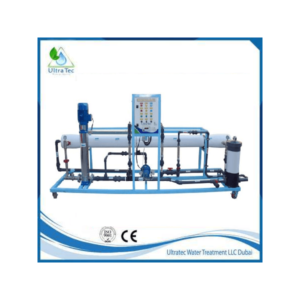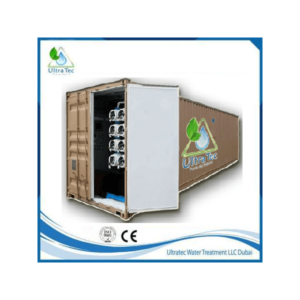The 20000 GPD Brackish water RO plant is a great choice for businesses that need purified water on the go. This plant offers fast and efficient performance, as well as superior quality. The plants are easy to operate and maintain, making them ideal for small businesses and busy families. Plus, they come with a one-year warranty, ensuring that you’re always protected.
Benefits of 20000 GPD Brackish water RO plant
This is Ultratec Water Treatment Company Uae 20000 GPD Brackish water RO plant that can be used to produce high-quality drinking water. This plant has been designed with special features that make it perfect for producing quality water. These features include high efficiency and reliability, as well as easy-to-use and maintain design. The plant also has a sleek and modern design that will look great in any facility.
20,000 GPD BRACKISH WATER RO PLANT
An increasing number of brackish water RO (Reverse Osmosis) and NF (Nanofiltration) systems are being designed and operated on high salinity brackish feed water sources which may range from 2,000 to 12,000 mg/l TDS (Total Dissolved Solids). Increased feed TDS can dramatically impact the planning of the RO/NF in terms of hydraulic design, feed pressure requirements, and permeate quality. Issues discussed include hybrid RO/NF membrane system designs for improved hydraulic flux design, the utilization of ERDs (energy recovery devices), and therefore the impact of upper salinities on the rejection of ions.
Systems with improved hydraulic flux designs can reduce the speed of fouling and cleaning, be more energy-efficient, and improve permeate quality. Systems with either feed-side or interstage energy recovery devices are often more energy efficient but the payback period has to be reviewed. A discussion is going to be presented that the industry has not widely addressed which is the observation of increased system salt passage with increased feed TDS and increased concentrate TDS at higher recoveries.
The industry historically calculated salt passage supported temperature, membrane type, membrane age, and therefore the composition of ionic species within the feed water. Improved calculations for salt passage address the three theoretical mechanisms of salt passage which are convection, diffusion, and charge repulsion. especially, the combined effects of feed ionic strength and membrane surface charge play a crucial role in the rate of salt passage. the RO system design projection programs must account for the high TDS effect on membrane salt rejection.
Two new case studies with high-feed TDS feeds are presented which review how well design correlates with actual operations. The 1stcase study is that the 16-mg 75% recovery North Miami Beach Norwood Oeffler water treatment Company Uae plant incorporates a 6-mg hybrid RO system whose feed source is the 2900 mg/l Floridan Aquifer.
The 2ndcase study is El Paso Water Utilities, the world’s largest inland desalination plant, which features a rated plant output of 27.5-mg with a 15-mg 81% recovery RO system whose feed source is the 2000 ppm mg/l Hueco Bolson Aquifer. Design Considerations for Top TDS Brackish Feed Waters For purposes of this paper, high TDS brackish feed waters are identified to possess feed TDS up to 12,000 ppm and may be treated by brackish water NF and RO membranes with feed pressures up to 450 to 600 psi (31 to 41.4 bar).
As feed TDS increases over 12,000 ppm TDS, then higher pressure seawater RO membranes rated up to 1000 to1200 psi (69 to 82.7 bar) tend to be wont to accommodate the upper feed pressures related to over-coming the upper osmotic pressures that are generated. The basic steps and style parameters to deal with in designing an RO/NF are: •Define the target permeate quality. this is often important in membrane selection.
2 •Define the number of feed water to be processed or permeate produced as this dictates the dimensions of the system.
•Define the percent recovery of feed water as permeate, as these impacts permeate quality, system hydraulics, concentrate TDS, and pressure.
•Define the feed water source quality for determining pretreatment requirements and selecting an appropriate flux design that mitigates potential fouling.
•Define the feed water-specific ions for determining pressure requirements and in determining specific ion rejections.
•Define the temperature range because the warmest temperature is the worst-case permeate salt passage and therefore the coldest temperature is the highest feed pump pressure requirement.
•Define the age of the system to project expected membrane degradation thanks to usage and cleaning, predict the speed of fouling employing a fouling factor or Jersey fern flux decline factor, and predict the Jersey fern salt passage increase factor.
•Define the operating expense of energy and therefore the pay-back period of time to work out if the cost of capital of an energy recovery device is often recovered. the main target of this paper is to deal with the effect of high TDS feed waters in computer design projections and the way this correlates to actual field operations.
Hybrid RO/NF Systems High TDS feedwater systems lend themselves to designing hybrid RO systems, primarily thanks to the hydraulic flux imbalance created by the massive pressure differential from the feed end to the concentrate end. A hybrid RO/NF system uses a special set of RO/NF membranes from one stage a special “> to a different stage or can use a different set of membrane types within a stage itself. Table 1 reflects the planning opportunities available to the planning engineer with the ultimate membrane selection based on the permeate quality required, the optimal feed pressure and energy requirement, and whether an interstage energy recovery device or booster pump is desired.
Features
Water making: 20,000 GPD
Flow rate 72-meter cube at 25 deg C
Rejection 95-98%
Recovery 50-60%
RO membrane-brand: CSM (8040 (400 ft sq) x3 pcs)
RO pressure vessel: FRP (8040x1pcs)
HI-pressure pump: 4 kW x 380V x 50 Hz (Brand: Grundfos, model CRI 5-29,
flow rate: 5T/hr, lift head: 165M)
Pre-filter TK 7-20
Pure water flow meter and drain flow meter
Low-pressure and high-pressure valve
RO frame by stainless steel welding
All pressure displays on the main panel
High-pressure SUS304
Low-pressure pipe sch # 80 UPVC
Flush the valve, feed the valve and adjust the valve.
20000 GPD BRACKISH WATER RO PLANT

The Ultratec Water Treatment Company Uae 20000 GPD Brackish water RO plant is a great choice for businesses that need purified water on the go. This plant offers fast and efficient performance, as well as superior quality. The plants are easy to operate and maintain, making them ideal for small businesses and busy families. Plus, they come with a one-year warranty, ensuring that you’re always protected.
Product Brand: Ultratec
Product Currency: aed
Price Valid Until: 2030-06-14
Product In-Stock: InStock
5



